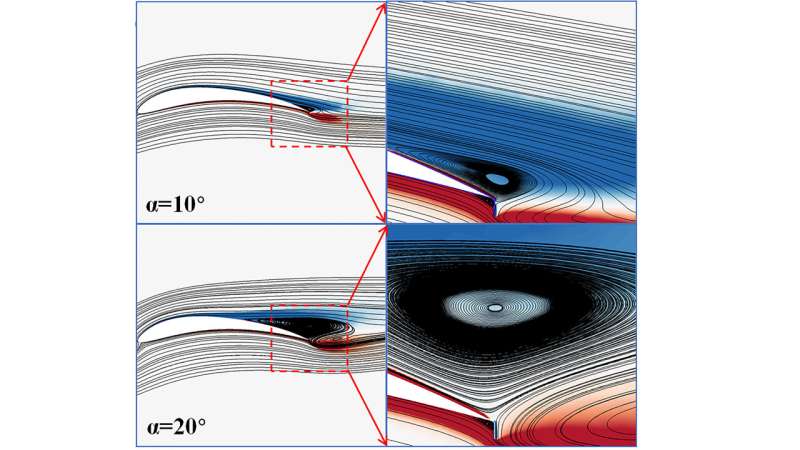Wind energy relies on efficient wind turbine blades, which act as airfoils, structures akin to an airplane wing. Air flow control accessories similar to those found in aircraft improve the turbine blade’s aerodynamic performance.
In the Journal of Renewable and Sustainable Energy, scientists from China show a bionic approach combining features of a seagull’s wing with an engineered flow control accessory, known as a Gurney flap, can greatly improve wind turbine performance.
A Gurney flap is a small tab projecting at right angles from the trailing edge of a wing. Its presence disturbs wind flow patterns and is especially effective at improving performance at low angles of attack. In aerodynamics, the angle of attack is the angle between a line through the center of an aircraft wing and the oncoming flow of air.
Although Gurney flaps improve performance of airfoils at low attack angles, they are not ideal for large angles of attack. Research has shown although Gurney flaps can significantly improve the performance of wind turbines in some situations, the turbine speed will be reduced.
Bionic flow control is a relatively new approach that imitates biological flight control systems—in other words, wings and feathers. The idea comes from the observation that during landing or in a gust of wind, the feathers on the top of a bird’s wings will pop out, creating a natural flap.
Computational and experimental studies show bionic feather-inspired flaps can increase lift and delay the onset of stalling at high angles of attack. Despite their advantages, adding bionic flaps can also reduce lift, particularly before a stall sets in. Therefore, the investigators tried an approach combining Gurney flaps with bionic features.
To achieve the best aerodynamic performance, the scientists simulated the use of the combined flow control accessory in a variety of situations, including high and low angle of attack and pre- and post-stall scenarios. They compared their computational simulations to experimental results for an aircraft wing undergoing a dynamic stall.
“The overall trend of the calculated lift curve is in good agreement with the experimental measurement results. Therefore, our simulation accuracy is considered acceptable, because the dynamic stall and its control are notoriously difficult to predict,” author Xiaomin Liu said.
The combined flow control accessory effectively improves the lift coefficient of the airfoil according to Liu. “For angles of attack in the range 16 to 24 degrees, the maximum lift coefficient of the airfoil is increased by 15% when a combination of Gurney flap and bionic flap is used.”

